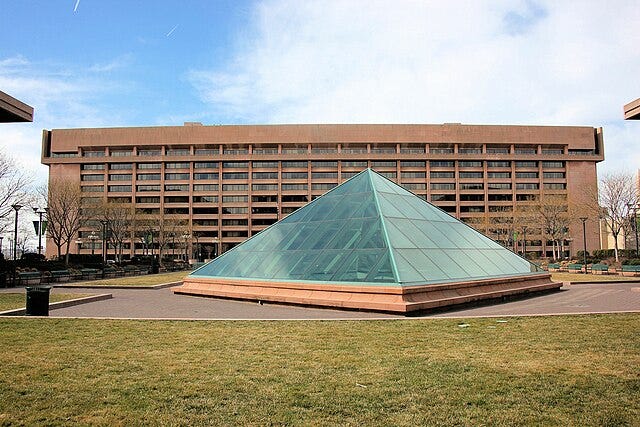How The Election Goes Postal

The United States Postal Service is an unsung hero in our elections. That’s right: a government agency that is often maligned actually plays one of the most important roles in our election system.
Just consider the logistics: the postal service must deliver tens of millions of ballots to voters in households nationwide and then subsequently return most of them to election officials in a timely fashion (many voters instead choose to deliver their ballots via a secure drop box). This task requires adherence to state election procedures, hitting various federal and state deadlines, and handling a huge influx of ballots due to an increase in the number of states using universal vote-by-mail as the primary voting system. In spite of these obstacles, the USPS, by virtually every metric, is continuously successful in fulfilling its role as an election facilitator. As Amber McReynolds, the vice chair of the USPS’s Board of Governors, told me in an episode of the Democracy Optimist podcast (listen here), the postal service has an intricate network of communications and logistics operations to make sure it all works.
The postal service employs over 640,000 people, has a presence in every community in America, and takes on the responsibility to deliver ballots (and all other election materials) to voters in the manner that states prescribe. The planning and guidance this task requires is a year-round endeavor. McReynolds noted that the Postal Service is more than capable of delivering ballots efficiently: she said that the organization, on any given day, delivers around four hundred million pieces of mail to 173 million doors nationwide. Given that the USPS delivered a little over a hundred million ballots during the 2022 primary and midterm elections, the logistics of ballot distribution is well within its purview.
McReynolds also addressed the multiple levels of security for mail-in ballots and explained how the USPS—in conjunction with each state’s election officials—distributes ballots securely and quickly. State officials, in the weeks leading up to Election Day, confirm the names and addresses of voters and then provide that list to the USPS. USPS delivers the ballots as soon as they’re received—typically within just a few days. Ballot delivery—like with most mail—is extremely accurate. To be sure, occasionally the USPS delivers a ballot to the wrong address, but that’s usually because of unavoidable errors such as a voter moving after the registration deadline. The anecdotes that one often hears about ballots showing up at the wrong household—which surely happens occasionally—are often devoid of actual facts.
In addition, wrongly delivered ballots are almost never cast. That is because election officials use further security measures. Signature verification, for instance, helps election officials guarantee that fraud is rare. The few instances where we learn of actual fraud—such as the 2018 congressional election in North Carolina that was thrown out due to absentee ballot fraud—show that the system is working. McReynolds suggested that the multiple verification measures that occur both before and after ballot distribution make vote-by-mail perhaps the most secure form of casting a ballot.
In fact, “vote-by-mail” may not even be the right term anymore. “Vote at home” is more accurate. Voters receive a ballot via the mail, take the time to fill it out at home, and then deliver it either via a drop box or through the postal service. McReynolds used to serve as the executive director of the National Vote at Home Institute, an organization focused on expanding the use of this electoral method. One of the Institute’s key findings is that expanded vote-at-home policies lead to higher turnout and a more engaged electorate.
While the use of absentee ballots has grown rapidly over the last few decades, the general concept of voting away from the polls has existed since the colonial era. Though used sparingly at the time, some states allowed voting by written statement for men in armed conflict who were unable to go to the polls. Absentee voting first occurred en masse in the 1864 election, as the Civil War pushed states to allow their soldiers fighting the Confederacy to vote. Some form of absentee voting has existed ever since, though expanded vote-by-mail is a more recent phenomenon. Oregon was the first state to adopt universal vote-by-mail—where every voter receives a mail-in ballot—in 2000. The COVID-19 pandemic expanded the practice, for obvious reasons, and today twenty-eight states allow for no-excuse absentee balloting.
Combined with the rise in early in-person voting (available in forty-seven states—all but Alabama, Mississippi and New Hampshire), it’s a certainty that a significant number of voters will cast their ballots somewhere other than the polls on Election Day.
So, if you choose to vote by mail this year, know that your ballot is secure. Many states use bar codes to track the ballot through the system. Arizona voters can receive a text or email when their ballot is mailed to them, when election officials receive it back from the voter, and when the signature verification is complete. Other states have similar processes.
We should applaud this trend towards more accessibility in voting. It is a bipartisan effort, with blue and red states alike expanding early voting and absentee voting. After all, the Declaration of Independence says that a government is legitimate based on the consent of the governed. That consent should include all of us having an easy mechanism to cast our ballot.




